






















MIDWEEK UPDATE 15 JANUARY 2014

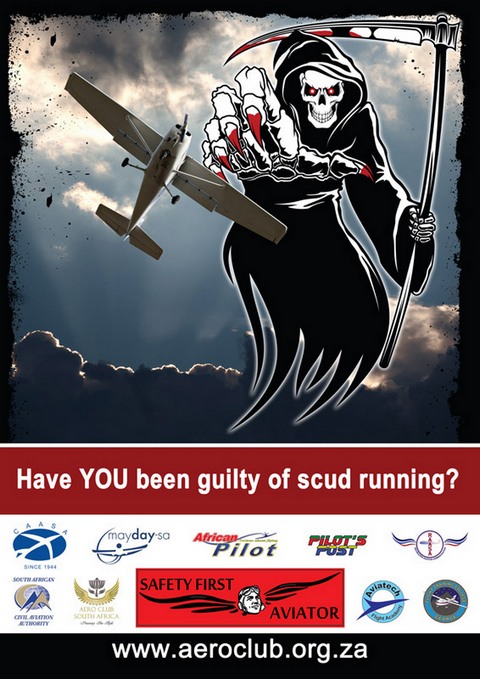
1 Plan your weekend
2 Forthcoming events
3 Sikorsky Delivers First Fully Configured S-76Dô Aircraft to Bristow Group
4 Global Hawk Aids in Philippine Relief Efforts
5 New Year's Day 2014 marked 100 Years of Commercial Aviation
6 AgustaWestland Signs Norwegian All Weather SAR Helicopter contract
7 Emirates Airline firms up order for 50 additional A380s
8 Advertising Rate Card
1
There are no events that we are aware of scheduled for this weekend.
31 January to 01 February: SAC Western Cape regionals / AWAC finals at Mossel Bay. Contact Annie Boon e-mail: change@mweb.co.za
31 January to 02 February: Dias Festival airshow - Mossel Bay.
Contact Hans Potgieter e-mail: airshowevents@gmail.com
1 February: SAPFA Rand Airport challenge rally: www.sapfa.org.za Contact Mary de Klerk mary@expandingbranding.co.za
1 February: SAAF Museum flying training and open day. Contact Capt. Kobus Kapp 012 351 2342. E-mail: webmaster@saafmuseum.org
8 February: MISASA Shootout 2014 to be held at Kitty Hawk. Contact John Boucher e-mail: comms@misasa.org Tel: 082 553 1105
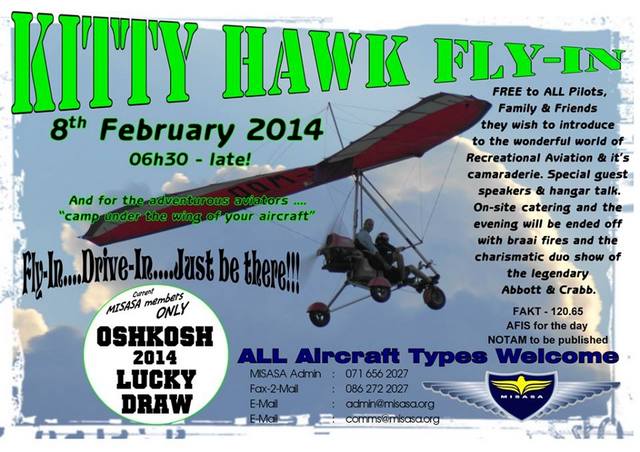
1 March: Swellendam fly-in. Contact Pieter Venter 083 250 9504 pventer@vgv.co.za
1 March: SAAF Museum open day. Contact Capt. Kobus Kapp 012 351 2342 webmaster@saafmuseum.org
8 March: Bultfontein Wings and Wheels. Contact Piet Vermaak 082 571 3422 bultfontein@laeveld.co.za
13-15 March: SA Navy Festival. Contact Navy PRO 021 787 5684
21-23 March: Durban Sky Grand Prix, Durban. Contact Gerna Fraser 031 563 9165
22 March: PASASA TMG fly-in, Kittyhawk. Contact Marietjie van Niekerk 082 765 6670
28-39 March: Wings and Wheels festival, Uitenhage. Contact Lourens Kruger 082 320 2615 imk@telkomsa.net
29-30 March: DAC North-West regionals. Contact Annie Boon change@mweb.co.za
3
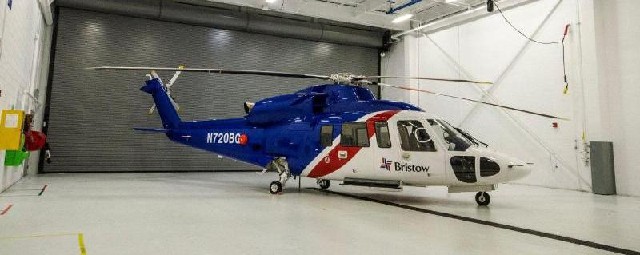
The delivery follows an announcement in March 2013 that Bristow would acquire up to 26 S-76Dô helicopters to transport oil rig workers to and from offshore platforms.
"This delivery marks a historic occasion for Sikorsky as the new S-76D helicopter heads into service. We are thrilled that the first completed aircraft is going to our highly valued customer, Bristow Group, with which we share a 40-year relationship and a culture of safety and quality," said Carey Bond, president, Sikorsky Global Helicopters. "We thank Bristow for their continued trust in our products and proudly look forward to this aircraft joining the Bristow rotorcraft fleet."
"Bristow is committed to providing the safest, most reliable and efficient service to our clients, and our S-76 aircraft have done just that by consistently performing a demanding and intensive offshore oil and gas transportation mission on an aggressive schedule," said William E. Chiles, president and chief executive officer of Bristow Group, "We are excited about this delivery and look forward to putting the new S-76D with its enhanced capabilities into our operations around the world."
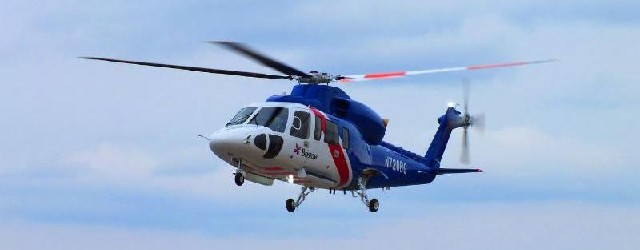
The Federal Aviation Administration approved the Type Certificate for the baseline S-76D aircraft in October 2012. In the ensuing year, the Sikorsky Flight Test program expanded certifications. The S-76Dô helicopter achieved FAA certification for offshore oil operations on Oct. 31, enabling Sikorsky to deliver completed aircraft for that mission. This certification increases the S-76Dô helicopter's maximum gross weight to 11,875 pounds and allows up to 12 passengers for operations in the offshore oil configuration. The S-76Dô helicopter also received an expanded baseline certification, allowing the aircraft to operate in a wider range of environments.
"The S-76D helicopter delivers the safety, reliability and efficiency our customers have come to expect from the S-76 family of aircraft, but with faster cruise speed and a more efficient fuel burn," added Mr. Bond.
The S-76Dô helicopter has quickly proven popular with customers, with a current backlog exceeding $700 million. Sikorsky has delivered more than 800 S-76 helicopters to customers globally since 1979, contributing daily to a growing 6-million-plus fleet flight hour total.
The S-76Dô helicopter's baseline equipment includes powerful and efficient Pratt & Whitney Canada PW210S engines; an advanced THALES TopDeck ģ integrated avionics system and four-axis autopilot; Health and Usage Monitoring System (HUMS) incorporated into fleet monitoring and analysis through Sikorsky Aerospace Services; active vibration control; and all-composite, flaw-tolerant main rotor blades. A Rotor Ice Protection System (RIPS) for all-weather capability will be available as an option.
Bristow Group Inc., which currently operates more than 100 Sikorsky helicopters, is the leading provider of helicopter services to the worldwide offshore energy industry based on the number of aircraft operated and one of two helicopter service providers to the offshore energy industry with global operations. Bristow has major transportation operations in the North Sea, Nigeria and the U.S. Gulf of Mexico, and in most of the other major offshore oil and gas producing regions of the world, including Australia, Brazil, Canada, Russia and Trinidad
4
The inherent intelligence, surveillance and reconnaissance (ISR) capabilities of Northrop Grumman Corporation's Global Hawk Block 30 unmanned aerial system were used to support massive international humanitarian assistance and relief efforts following typhoon Haiyan in the Philippines.
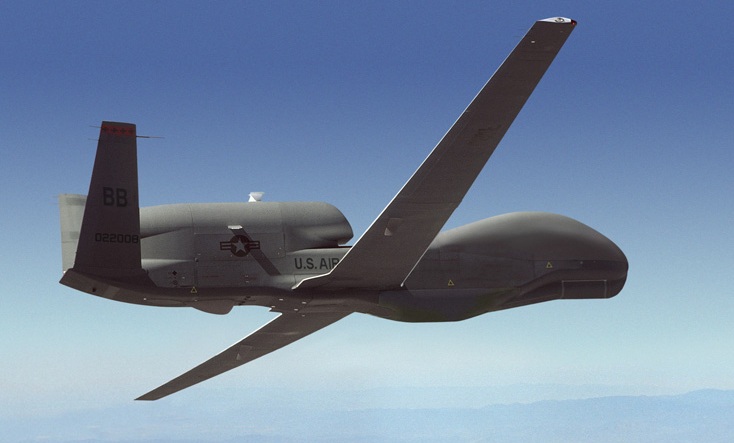
Due to Global Hawk's long endurance, persistence and range, the Block 30 was the only high altitude asset able to support relief efforts in this critical region of the world on a moment's notice. Global Hawk is also the only high altitude unmanned system able to carry radar, electro-optical (EO) and infrared sensors simultaneously.
On November 14, Global Hawk flew its first of three critical sorties from Guam to the Philippines. It collected 282 wide-area images of the typhoon- ravaged area before returning to Andersen air force base. Rapidly collected EO imagery was quickly relayed to U.S. and Philippine authorities to assist with infrastructure and damage assessments. Imagery also aided in logistical assessments of roads, airports and fields to help relief teams swiftly reach displaced survivors. On November 16 and 20, the US Air force added the second and third sorties to support relief efforts.
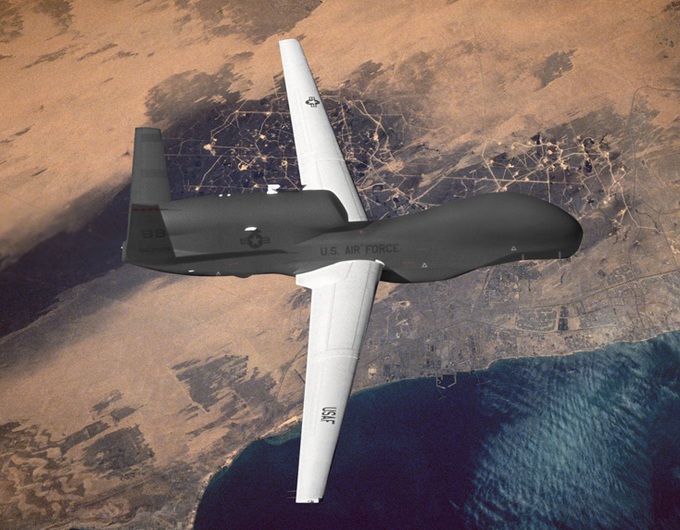
In total, Global Hawk collected approximately 1,000 planned images and a number of ad hoc collections on each sortie. Global hawk's system flexibility allows for ad hoc retasking to obtain specific pertinent imagery and data.
"Mission planning in a crisis is hard, but having the ability to task and retask Global Hawk gives commanders the flexibility to conduct productive ISR missions that feed near real-time information to the response teams who need it the most," said Jim Culmo, Northrop Grumman's vice president, high altitude long endurance enterprise, Northrop Grumman.
When disaster strikes, understanding the magnitude of destruction left in the wake of the event is critical. Global Hawk's EO imagery covers large regions with high-resolution detail in support of vital life-saving operations.
Global Hawk's first humanitarian mission took place in 2007, as southern California fought devastating fires. In 2010, Global Hawk supported international requests for surveillance following the Haiti earthquake. Similarly, the Global Hawk collected data and imagery within the dangerous radiation zones over the Fukushima power plant following Japan's 2011 earthquake and tsunami disaster.
In addition to humanitarian assistance and disaster relief efforts, Global Hawk has logged more than 100,000 flight hours and has been used over battlefields in Iraq, Afghanistan and Libya.
5
Celebration of first paying passenger flight launches year of reflection on contribution of aviation to modern life
1 January 2014 marked exactly 100 years since the birth of commercial aviation and the International Air Transport Association (IATA) invites everyone with an interest in aviation to join a year-long celebration of the 100th anniversary and take part in a conversation about what needs to happen to make the next 100 years even more momentous.
From a pioneering beginning to a global force for good
On 1 January 1914, a team of four visionaries combined efforts in the first scheduled commercial airline flight:
Percival Fansler organised the funding for the St. Petersburg-Tampa Airboat Line which provided the first scheduled air service across Tampa Bay, Florida
Thomas Benoist's airboat conducted the first flight, piloted by Tony Jannus
Abram Pheil, then mayor of St. Petersburg, paid $400 at auction for the 23-minute flight.
These pioneers could not have envisioned the transformational changes that would follow. The industry began with only one passenger on one route on 1 January 1914. Today the global aviation industry provides unprecedented connectivity and positively impacts-directly and indirectly-people in all corners of the world. Some key statistics include:
On average, every day more than 8 million people fly. In 2013 total passenger numbers were 3.1 billion-surpassing the 3 billion mark for the first time ever. That number is expected to grow to 3.3 billion in 2014 (equivalent to 44% of the world's population).
About 50 million tonnes of cargo is transported by air each year (about 140,000 tonnes daily). The annual value of these goods is some $6.4 trillion-or 35% of the value of goods traded internationally.
Aviation supports over 57 million jobs and generates $2.2 trillion in economic activity. The industry's direct economic contribution of around $540 billion would, if translated into the GDP ranking of countries, place the industry in 19th position.
Global airline industry turnover is expected to be $743 billion in 2014, with an average industry net profit margin of 2.6%.
"Over the last century, commercial aviation has transformed the world in ways unimaginable in 1914. The first flight provided a short-cut across Tampa Bay. Today the aviation industry re-unites loved ones, connects cultures, expands minds, opens markets, and fosters development. Aviation provides people around the globe with the freedom to make connections that can change their lives and the world," said Tony Tyler, IATA's Director General and CEO.
"Aviation is a force for good. And the potential of commercial flight to keep changing the world for the better is almost unlimited. Aviation has always been a team effort. Growing and sustainably spreading the benefits of connectivity will require the industry, governments, regulators and local communities keep true to the 'all-in-it-together' ethos that was the bedrock of that pioneering first flight. And we should be guided by the long-term interests of all whose lives are positively transformed by commercial aviation every day.
A hundred years is something worth celebrating. And we look forward to creating an equally remarkable legacy for commercial aviation's second century," said Tyler.
6
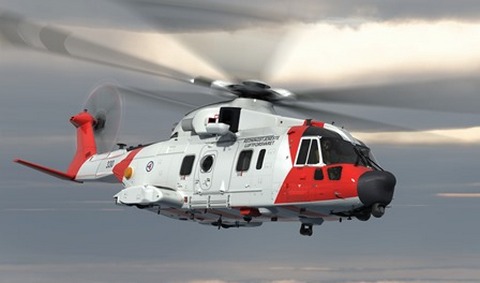
AgustaWestland, a Finmeccanica company announced that it has been awarded a contract for 16 AW101 helicopters plus support and training, valued at approximately £1 billion (Ä1.15 billion), to meet the Norwegian All Weather SAR Helicopter (NAWSARH) requirement. The contract also includes an option for six further aircraft.
The contract was signed at the end of a meticulous selection process that took into account technical features as well as risks and cost evaluations. The AW101 emerged once again as the best solution to meet the stringent requirements issued by the Committee tasked with the selection. The AW101 benefits from three-engine safety, a full ice protection system for flight in known icing conditions, long range and endurance, a proven 30 minute "run dry" gearbox as well as multiple redundancy features in the avionic and mission systems.
The contract signing ceremony was held in Oslo today in the presence of Anders Anundsen, Minister of Justice and Public Security, and Daniele Romiti, CEO of AgustaWestland.
Aircraft deliveries to the Royal Norwegian Air Force, who will fly and operate the helicopters, will start in 2017 and continue through to 2020. The aircraft will be assembled at AgustaWestland's Yeovil facility in the UK.
As part of the contract, a fifteen year "turnkey" support solution will be delivered, comprising spares and technical support and training services, with an option for it to be extended for a further five years.
Daniele Romiti, AgustaWestland's CEO said: "We are delighted that the AW101 has been awarded the Norwegian All Weather SAR Helicopter contract following a very detailed evaluation process of all the alternatives. The new generation AW101 will bring new capabilities and is a worthy successor to the AgustaWestland Sea King which has successfully served Norway for more than 40 years."
He added: "The AW101 is recognized around the world as the most capable and advanced helicopter in its class and has proven its outstanding all weather and long range SAR abilities in service with the Royal Canadian Armed Forces, Royal Danish Air Force and Portuguese Air Force. Furthermore, the success reaffirms AgustaWestland's excellence as a provider of advanced rotorcraft and comprehensive support solutions."
"I am very pleased with signing the contract for new rescue helicopters" says the Minister of Justice and Public Security, Anders Anundsen. "This ensures a significantly improved safety for people at sea, along the coast and in remote areas around the country. The new helicopters will be able to rescue significantly more people in distress, be noticeably faster and with longer range than today - under virtually all weather conditions. Additionally, search capability and the possibility for medical treatment are significantly improved."
UK Prime Minister David Cameron said: "This £1bn deal between AgustaWestland and the Norwegian Government is testament to the first class engineering skills we have right across the UK, while highlighting that this Government's long-term economic plan is working. Safeguarding over 3000 jobs across their Yeovil plant and many more across the SME supply chain, this is a hugely significant order which demonstrates why drumming up jobs and investment for our country from overseas investors is crucial to rebalancing the UK economy. We've got our sights focused on helping more innovative British firms across the country compete in the global race and ensuring that more people share in our economic success."
The aircraft will be equipped with an advanced SAR equipment package including a multi-panel AESA surveillance radar system from Selex ES that provides 360į coverage, 4-axis digital Automatic Flight Control System (AFCS), two rescue hoists, searchlight, electro optical device and a fully integrated avionics and mission system. The large cabin doors and rear ramp provide easy access for personnel, survivors and equipment into the 27 m3 cabin which has stand-up head room throughout.
AgustaWestland will provide initial support and training services, including spares at each of the operating bases and aircrew training. It will then provide performance based logistic support to deliver approximately 90,000 flying hours across the fleet of 16 helicopters over the initial 15 year period. In support of pilot training a full flight simulator will be available in Norway in 2016 in advance of the delivery of the first aircraft.
AgustaWestland has partnered with Norwegian companies AIM Aviation to provide maintenance services at the Royal Norwegian Air Force's operating bases and with Kongsberg Defence Systems to provide helicopter transmission repair and overhaul services.
7
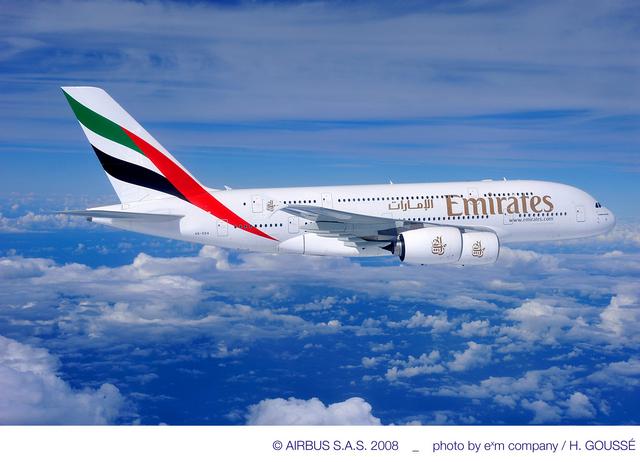
Emirates Airline and Airbus have completed discussions and signed the firm contract for 50 additional A380s originally announced at the Dubai Airshow on 17th November 2013. The contract documents were finalised by Tim Clark, Emirates Airline President, during a visit to Airbus' Headquarters in Toulouse, France.
Tim Clark, President Emirates Airline said on the occasion: "The A380 is our flagship aircraft. It is popular with our customers and delivers results for us in terms of operational performance. That is why we have ordered these additional 50 aircraft, to add to our A380 fleet."
"This order is a major vote of confidence in the A380. Since delivery of their first aircraft in July 2008, Emirates' A380 fleet has grown to be the largest in the world with 44 A380s in operation. We congratulate Emirates on this impressive achievement and thank the airline for their continued support of our flagship aircraft. As Tim Clark has often said, "The A380 really is a game-changing aircraft." commented John Leahy, Airbus Chief Operating Officer, Customers.
Since first entering service in 2007, to date 122 A380s have been delivered, to ten world class carriers. The aircraft flies 8,500 nautical miles or 15,700 kilometres non-stop, carrying more people at lower cost and with less impact on the environment. The spacious, quiet cabin and smooth ride have made the A380 a firm favourite with both airlines and passengers, resulting in higher load factors wherever it flies.
8

 |
 |
 Copyright © 2024 Pilot's Post PTY Ltd
The information, views and opinions by the authors contributing to Pilotís Post are not necessarily those of the editor or other writers at Pilotís Post.
Copyright © 2024 Pilot's Post PTY Ltd
The information, views and opinions by the authors contributing to Pilotís Post are not necessarily those of the editor or other writers at Pilotís Post.